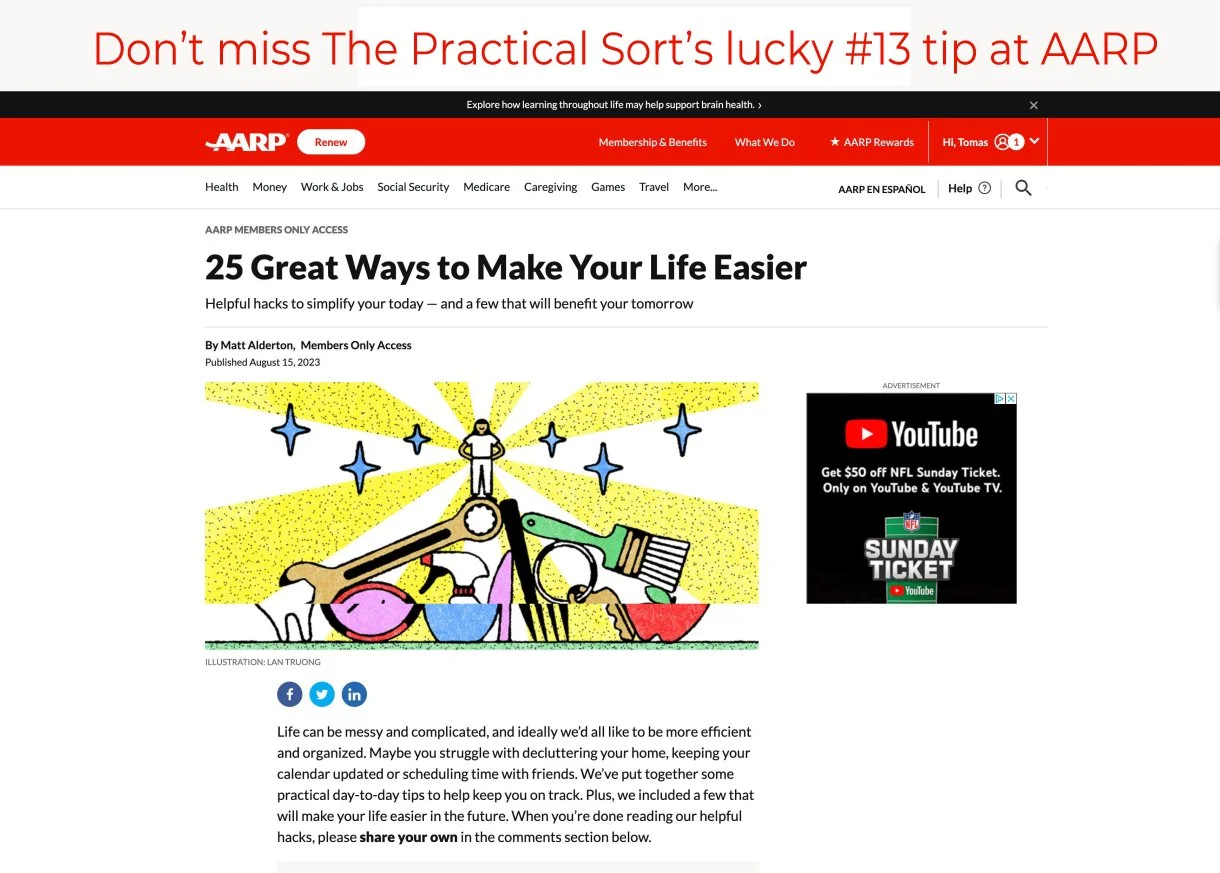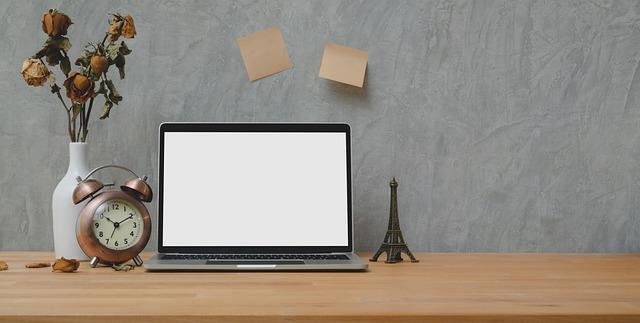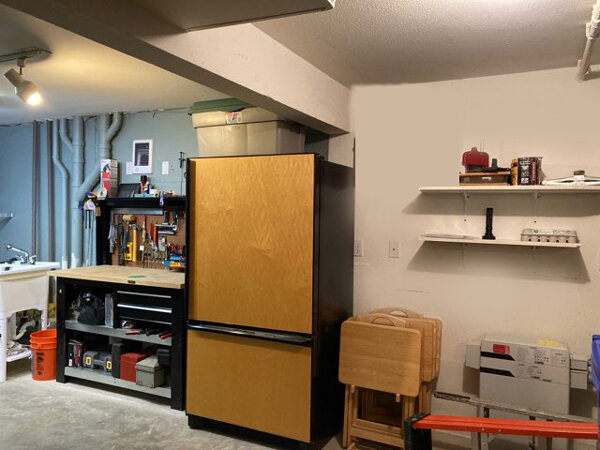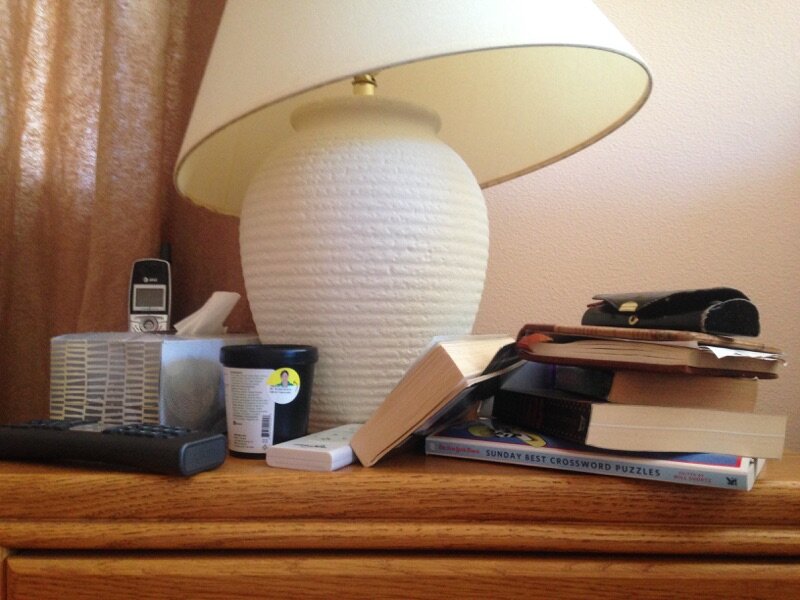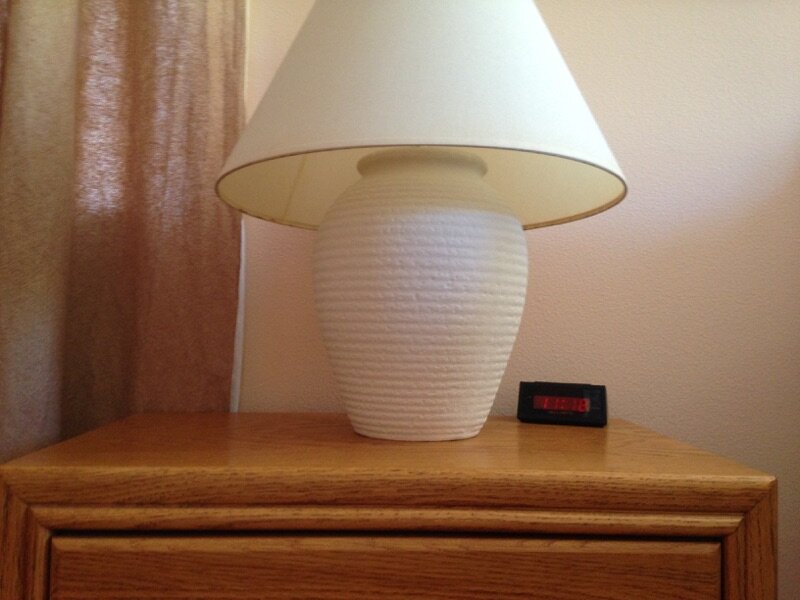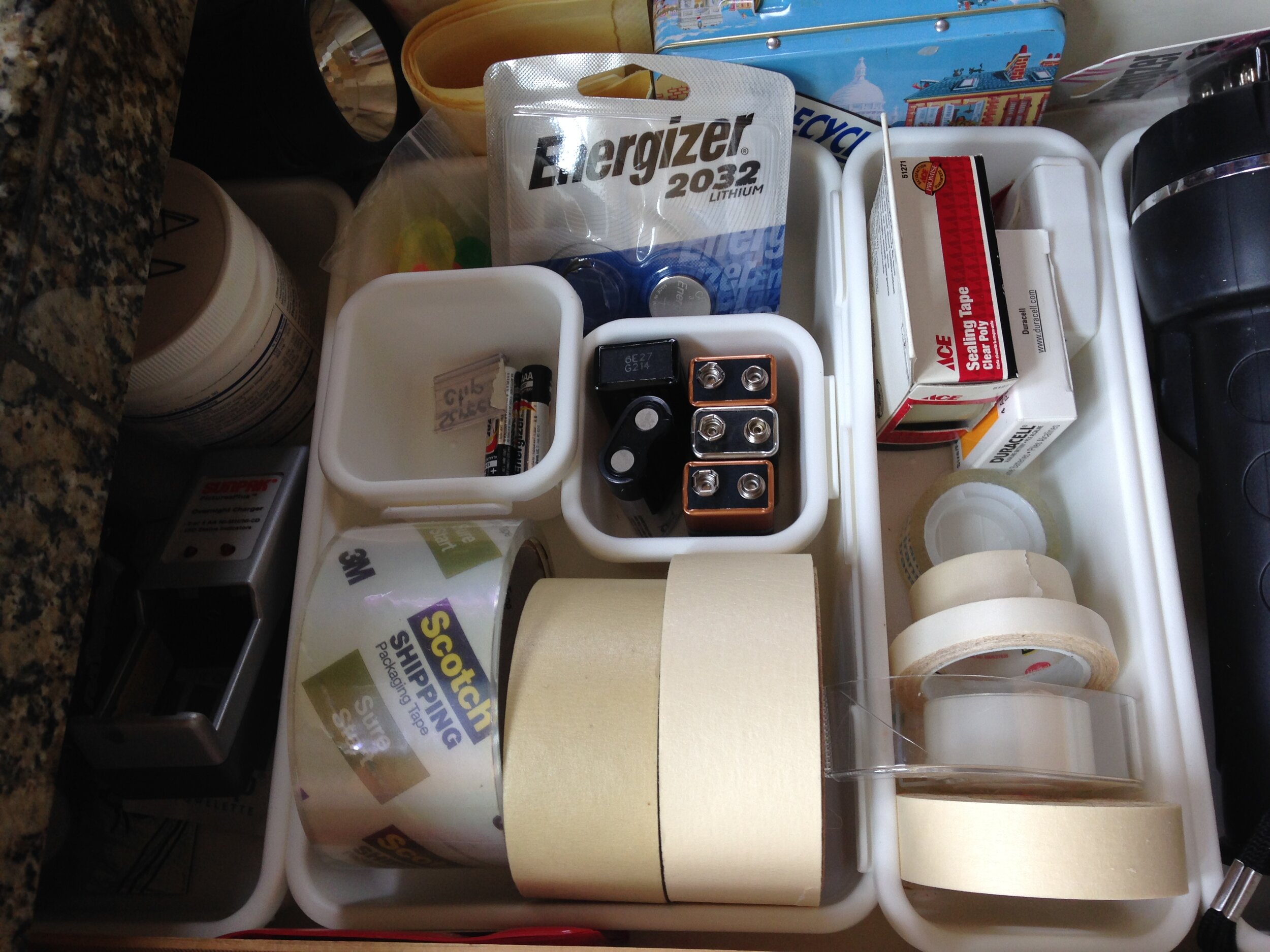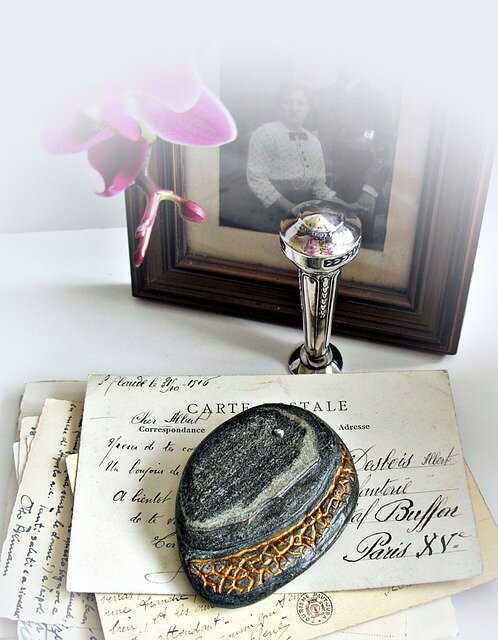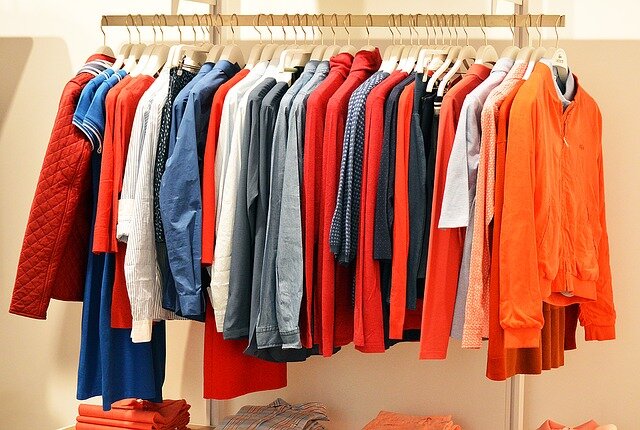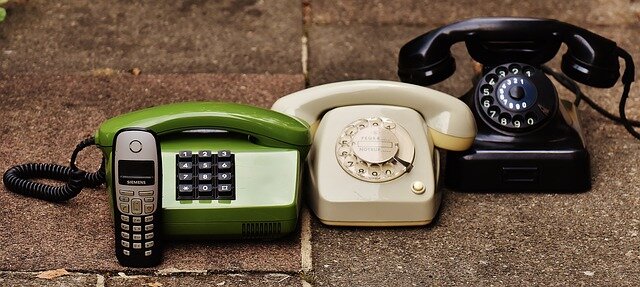Minimalism is a mindful, conscious approach to purchasing only what serves you whether it’s essential for survival or imperative for emotional well-being such as home décor or recharge getaways. Image by Katharina Dolinski from Pixabay.
Minimalism is a mindful, conscious approach to purchasing only what serves you whether it’s essential for survival or imperative for emotional well-being such as home décor or recharge getaways. Like everything in life, we function more optimally with balance. Too little or too much of anything can be detrimental physically and psychologically. Possessing less stuff means…
The benefits of mindfully pulling out our wallets are many. They’re evidenced upstream (manufacturing and distribution), midstream (in our homes), and downstream (final resting places for our stuff).
What Stays, What Goes?
The things to keep are the things that keep you safe (we don’t use fire extinguishers all that often I hope, but you wouldn’t want to part with those), that make life easy (a blowdryer hastens hairdrying and styling), necessary (car or bike if mass transit is unavailable), and enjoyable (family portraits remind us of loved ones near and far warming our hearts).
As for what to get rid of first or avoiding unnecessary purchases, visit this Practical Sort blog, Minimalism: Your Keys to Treasure Your Personal and Global Space—July 2016 to ascertain integral questions to ask yourself during the decision-making process. I also highly recommend working with a neutral friend, spouse, or professional organizer to guide decision-making if it feels too scary, onerous, or impossible. Allow others to hold item(s) in question. Decisions to release are much easier if you don’t touch objects to avoid reawakening dormant memories.
Minimalism is Easier Than You Might Think
Practicing minimalism is as easy as deciding to do one less thing. It’s not another hour you need to set aside for a new lifestyle choice, it doesn’t cost you extra money, it’s just a new way of making choices to thoughtfully select what to bring into your home. Then as you have time, assess what is already residing in your home to determine if it is worth the real estate price that it’s occupying. If square footage is worth $200 in your city, is that box of old school books worth $200 and the storage space it’s eating up? If not, what is an eco-friendly, socially-responsible way of removing it? Gifting or donating if you have a willing recipient, repurposing if the item can be reimagined into a new use, repairing if it’s broken and can be fixed provided you still need it, recycled if recycling options exist, and lastly trashing if the landfill is the only viable alternative.
Are There Downsides?
Nothing’s perfect. There are downsides to minimalism. What are they?
Is a minimalistic lifestyle right for you? Who knows? There’s only one way to find out.
The Practical Sort’s Tip Featured in AARP.com
Writer Matt Alderton featured The Practical Sort in AARP’s August 15, 2023 “25 Ways to Make Your Life Easier”. Truthfully, I was blown away by the sheer number and quality of simplifying tips. Scroll to lucky #13 to learn how grocery list templates simplify inventorying what you need to ensure that you stay on track at the store.
If you’re an AARP member, you can access the link directly through the members’ access portal. To ensure that non-members don’t miss a tip, thanks to Matt for providing us with a PDF too.
To view the PDF, click the photo below. It will open in a new window. It may take a second to load. From there, click once again on the pop-out arrow within the square at the top right corner of the new window image.
A huge thank you to Matt! Thank you AARP!
When the world and your stuff feel or look too big, and the price tags are too high, tap into your inner minimalist. Nothing drastic. Nothing overly time consuming. In fact, it should save you time. It will spare you visual and kinesthetic overwhelm. Take it to the level that feels right for you.
Minimalism is a mindful, conscious approach to purchasing only what serves you whether it’s essential for survival or imperative for emotional well-being. Like everything in life, we function more optimally with balance. Too little or too much of anything can be detrimental physically and psychologically. The benefits of mindfully pulling out our wallets are many. Our purchasing behaviors have measurable effects upstream (manufacturing and distribution), midstream (in our homes), and downstream (final resting places for our stuff).
Here’s how it breaks down. Purchasing and possessing less stuff means:
- More money in our pockets. This is critical as we watch prices soaring.
- Less time babysitting stuff. We rarely think about those extra minutes it takes to shuffle objects while dusting or wiping down surfaces, rearranging so placement location makes sense, and searching for needed items among the heaps.
- Less burden and cost for those who will one day be faced with clearing our material legacies out.
- More freedom and time to engage in activities we enjoy.
- Less toxic impact on our personal and global environments.
Doesn’t that sound liberating? How do you implement this type of lifestyle in a practical way. Let’s start with the basics.
The things to keep are the things that keep you safe (we don’t use fire extinguishers all that often I hope, but you wouldn’t want to part with those), necessary (car or bike if mass transit is unavailable), that make life easy (a file folder makes quick work of finding that document ASAP), and enjoyable (family portraits and memorabilia warm our hearts and feed our souls).
Practicing minimalism is as easy as deciding to do one less thing. It’s not another hour you need to set aside for a new lifestyle choice, it doesn’t cost you extra money, it’s just a new way of making choices to thoughtfully select what to bring into your home. Then as you have time, assess what is already residing in your home to determine if it is worth the real estate price that it’s occupying. If square footage is worth $200 in your city, is that box of old school books worth $200 and the storage space it’s eating up? If not, what’s an eco-friendly, socially-responsible way of removing it? Gifting, donating, or selling if you have a willing recipient/buyer, repurposing if the item can be reimagined into a new use, repairing if it’s broken and can be fixed provided you still need it, recycled if recycling options exist, and lastly trashing if the landfill is the only viable alternative.
Downsides of minimalism are it may take some time and effort to make conscious decisions, pack up items, determine their next destination, and possibly deliver. There are also transportation and environmental impacts associated with transit, recycling, or landfilling. There may also be some financial hits if fees are assessed for pick-ups or disposal. HOWEVER, at some point in our lives, our stuff will need to go somewhere outside our current residences. We’re simply postponing the inevitable hanging onto unimportant, unnecessary, or unwanted possessions. Do we choose to burden someone else’s time, money, and labor with the task? Is that fair to our children or whoever will inherit the responsibility? The less we have, the less legacy we leave behind for someone else to clean up.
Next time you're at the store, on the verge of purchasing something new, and you’re struggling with a yay or nay, ask yourself
- What drew you to the item?
- How will it serve you?
- What are the consequences of purchasing? Does it honor your diet or nutrition goals? Does it enhance your decor? Will it make you or others feel better?
- What will it mean for storage space, budget, impacts on others?
- What are the consequences of not purchasing? Consider whether a need goes unmet, safety is compromised (fire extinguisher for example), inconvenience, or on-going frustration from not having the item.
- Will it be used and how often?
- Are borrowing or renting an option if it will only be used once or twice? Lending libraries and clothing rentals are gaining popularity. Watch for local repair cafes if you need to replace a broken item.
- Is it something that will elicit happiness, creativity, satisfaction in some way that justifies the purchase or retaining?
- Is it within your budget? Saving for a honeymoon in Maui? How will this new hot tub square with that? If you’re already in the red, how does another purchase impact your bottom-line or ability to reduce the deficits?
- What would you be willing to get rid of to make room for this?
- Will the purchase cause a relationship conflict? How will your future spouse react if the hot tub means no Hawaii after the wedding? If purchasing habits are causing disruptions in your household, will this item add fuel to the fire? If it's justifiable, that's ok too as long as it's a conscious choice.
Phew. Those were a lot of questions to remember. Depending upon your circumstance, not all will apply. For instance, if you have a lush bank account or a house with endless storage, your personal assessment will look different than someone in the red or with already crammed storage areas.
If the purchase is a toss-up, that’s often an indication that it won’t add value to your life. Watch for a yellow or red flag. Unease in your stomach, feelings of guilt, tensing muscles, those are probably flags. You don’t necessarily need to stop, just pause and check in with yourself to see what’s up?
Special occasion items frequently stump us. Let’s say you find a flattering dress, on sale, it makes you feel like “wow”, then go for it if it doesn’t break the bank or add to current debt concerns. You can make room for one additional item by letting an old, tattered, unflattering one go. Other options for one-off events are renting fancy clothes or hitting upscale thrift stores. Less cost, no additional clutter from rentals, and you get reuse bonus points.
If you’re not confident in your purchasing decisions or are prone to over-purchasing, ask for support from someone you trust who makes mindful decisions. In other words, not a “yes-person.” Rather look to someone who honors honesty and your lifestyle goals.
You don’t have to commit to a Minimalist lifestyle…yet. Take it for a test drive. Ease into it. See what you think. Create a fit that works for you not one dictated by someone else.
Freebie Flops
Don’t you just love receiving product samples? Finding little tokens stashed in packages ordered online? Clerks handing you testers to take home to try? Bottles stashed away from hotel rooms or cruise cabins? Oh, it’s like the excitement of holiday or birthday mornings. Well, exciting until you have an accumulated stash of unwanted shampoos, hand lotions, soaps, toothpastes, colognes, and cosmetics.
Freebies are fun. Trial sizes are an ideal way to give new products a whirl without shelling out money for something that may or may not suit your senses, skin or hair type, or style. The last time I ordered a refill for my favorite (and only) perfume, the company generously packed in nearly ½ dozen samples of other scents. It was an opportunity to step out of my comfort zone. Not that far. None of the options were remotely like the musky, understated tones which I prefer. Instead, some are outrageously brash (phew) and others are sickeningly floral (yikes).
Ugh, what do I do with them now? What do you do with the product samples that aren’t striking a chord for you? Perhaps they’ve caused an allergic reaction like the searing headache I battled for hours after applying only a minute amount of one fragrance. I washed my skin, changed clothes, and left the house for a bit as the lingering became unbearable. No joke, it took days before the house no longer wreaked. My head and sinuses weren’t amused.
When I was a wee lass, I probably would have used some of the less pungent bottles for playing dress up. Instead they’re congregating in a jar awaiting their next destination. It might be a while.
If you’re looking to clear out some of the unwanted giveaways, here are some ideas for sending them to another home.
Donate
Unopened items such as shampoos, soaps, lotions, toothpaste, deodorant, shaving cream, and feminine hygiene products are in demand by women and family emergency shelters and homeless services. You might even wish to try assisted living residences. Make a pretty gift bag and fill it with the personal care and beauty items.
Cosmetics and colognes are a bit trickier, particularly if you’re not a fan of the color, ingredients, or odors. You could try to donate the samples if the packages are unopened/unused. Click the link for some charity ideas from Allure.com for donating beauty freebies. Keep in mind, the covid-19 pandemic may have altered what is currently accepted.
Donate unopened foods and pet food samples to food banks or pet shelters. This afternoon a nearby pet store threw in a large selection of sample items for my daughter’s cat to taste test when she visits later in the week. They assured me that anything my grandbaby doesn’t like can be returned and will be donated to the local pet shelter.
Call ahead before donating to ensure that what you have is acceptable and any other protocols you need to follow.
Gift
Include the samples as a gift add-on for teachers, hair dressers, postal workers, extra-curricular coaches, friends, and relatives. If you know that someone adores a particular color or scent that matches what you have on hand, all the better.
Include the samples in a gift basket for an upcoming school or charity auction.
Add the samples to holiday gifts or include in a holiday dining table centerpiece, and let your guests know that they’re for the taking.
Sell
Hosting a garage sale? Place the sample bottles in a decorative container as a giveaway or priced-to-sell.
Hopefully the next time you receive products samples, the excitement will extend beyond simply getting a freebie. If it’s actually something that you will use or that you want, that’s truly exciting!
The Garage is Finally At Peace, As are We
From the day I moved into my home, I absolutely despised the garage. That was even before we began filling the space with our own STUFF. It’s a 3-car garage, a nearly inaccessible under-the-stair storage closet tucked away in the back, plus additional storage beyond the third bay car space. So what’s not to like?
Over the years, I would sneak into this spider-infested tomb-like area to declutter, rearrange, and minimize. It was a cloak and dagger operation because technically this is my husband’s domain. He knew where things were and didn’t want things disappearing. I tried not to make any severely noticeable alterations. He rarely ventured there except for occasional repairs within the garage or to access his tool bench to foster repairs elsewhere. In 2019, I completed a bin labeling project for tools and hardware (major win), and early in co-vid, I created a recycling zone system. Yet, the garage still really bugged me. Inefficient use of space caused me visual overwhelm.
Here’s why. Broken down cabinets gobbled way too much space on both sides of the 3rd bay walls. Doors that didn’t close. Drawers fell out when opened. The setup was virtually unusable. A horrid waste of at least 16+ feet of wall length between the 2 sides. We seldom used the double sink that ate up much more room than needed. The countertop was good for housing off-season tires, but not much more. Paint cans were jammed in below. The other side held some old sports equipment, yet not efficiently. Bats and bins of balls and frisbees, helmets etc. were in front of it on the floor. As you can imagine this unsightly mess doesn’t sit well with an organizer. But again, I was mainly hands-off in this space until…
Hubby’s trip in early September to visit a friend abroad was cancelled due to Covid. Instead of doing something fun with his scheduled time off, he began to methodically tackle the garage. YAY! Whereas I awaited the din of a sledgehammer to obliterate the cabinets, he, bless his eco-heart, painstakingly and patiently took it all apart saving as much salvageable wood as he could (which wasn’t much) and each nail, screw, latch, door handle to set aside for donation. Surprisingly he only found 3 dead mice nested behind the center.
Ikea shelves were moved to wall in front of cars
For the first time since the pandemic shutdown, I was hands-on organizing, and I was giddy. He allowed me into the space every so often to haul away debris and donations into my vehicle. Once my car was fully loaded, we mapped out routes for each of the donation centers and the waste transfer center to dispose household hazardous waste and all of the splintered, rotted, and warped mush board. After the junk was removed, I was invited in to restore order. I hadn’t realized how much my brain missed this.
These shelves were repurposed from the wall in front of the cars. Others are on opposing wall now.
Old refrigerator, currently housing biz supplies is neatly tucked away. Basin sink eats up less room. More repurposed shelves from other wall.
You’d probably laugh if you saw our reactions each time we enter our garage now. We both stare and smile at the breadth of room we gained by ridding ourselves of those ghastly space hogs. We haven’t added any additional storage. He relocated some rather useless shelving from the wall in front of our cars and rehung them strategically in other parts of the garage. The wall located in front of our cars now houses an IKEA wall unit that had to be moved to make way for solar batteries (one of the catalysts that egged on this project). An old refrigerator that chewed up space nearly blocking access to the storage closet was relo’d to the opposite wall. We use that occasionally for party platters. In the meantime I stock some of my business supplies inside until we plug it in for occasional use. We replaced the double sink with a stand alone basin.
It’s absolutely remarkable how much space we gained. How open and less cluttered it looks and feels. It took nearly a week of work, but the weight loss has left us both with visual and kinesthetic joy.
No, I didn’t take before photos. We considered it, and I probably should have. But neither of us bothered. It wasn’t worth the effort. I don’t think he really understood up until now how much elation my clients experience when they excitedly share about their household weight loss. He says he gets it now. It feels really good. REALLY GOOD!
Here are some takeaways that might help you.
Don’t wait to love your home. It’s a major investment, so why not love it each and every day? I learned that lesson in 2017 when I finally remodeled the primary bathroom and closet after a decade of loathing. But this project was his. He needed to come to the conclusion it was time, so I didn’t press it. Just do it, if you can afford it. Or start saving today, that’s taking the first step.
Tackle projects little by little. Block out time in your schedule to make inroads. It can be minutes or hours or both depending how your calendar looks. If you only have minutes available, use it for labeling or loading donations into your car. Don’t get discouraged if you don’t finish in one day. However, before leaving the area, tidy up to allow for safe passage through the area.
Make it doable. Prepare yourself by eating, hydrating, put on music and possibly enlist the help of others to pass the time faster. Extra hands can help with lifting, moving heavy objects, loading, rearranging, researching donation options while you focus on your areas of strength. Not sure how or where to start? Here are step by step instructions for garage, attic, and basement decluttering and organizing.
Plan. If you have recyclables and donations for multi-destinations, plan your routes for optimal time and gas savings. Be sure to check with facility protocols for hours of operation, acceptable goods, and pandemic restrictions. Think outside the box too. I was amazed at the variety of items our local Habitat Restore accepts now. It never occurred to me that they sell cat carriers and dishes. Don’t be afraid to inquire.
Celebrate. After each milestone, acknowledge the progress. When you finish, plan a celebration even if its just admiring a few snapshots. You deserve the reward. Enjoy the fruits of your labor. Enjoy your home.
The Game of Stuff
Do you play computer games? Familiar with Spider Solitaire? It’s one of my rewards after finishing priority to-dos or during weekend downtimes. I’m kind of addicted. I get very competitive and like to win (on the advanced level).
Notice the dealt hand on the screen? That was one of my recent nasty challenges. Pure shite!
As I battled my way through the cards, it occurred to me how analogous this gaming situation is to the story of our stuff. There were loads of cards in my possession, but no available moves. All these cards were absolutely useless at that point. What I needed were 1-2 strategic cards to ensure success. To get my win. Feel satisfied enough to get on with my day. Eventually, I struck gold with one card that allowed me to peel away the piles. Ok, I may have cheated just a little by backpeddling a few moves for a replay. I saw where I went wrong. Tried a new strategy. No one else was looking, so this is between you and I, ok?
Let me propose that backpeddling is not a bad thing. It’s an opportunity to make a correction, set a new course of action. If we can correct a mistake or modify circumstances to make them better, why not? That’s how we learn and grow.
How does that equate to our stuff? Having more possessions is rather meaningless unless they are meaningful. More stuff takes up space without necessarily delivering any gain or satisfaction. The extraneous eats into our time, wallets, and emotional states.
Now imagine the next time you come across sale items, super bargains that seem too good to pass up. How will that purchase will move you toward achieving comfort, efficiency, time saving, elation? Saving money on a quality constructed necessity or desire is fabulous. Landing a bargain on an item that will break easily or rarely get used technically wastes money despite the price discount. Not such a bargain afterall.
It all boils down to strategic purchasing much like the playing cards. But the difference is I had no choice in the cards that were dealt, only how to put them to use. You have the choice of how you wish to deal with your money, space, time, and emotions then selectively add stuff that’s a win for you.
The same goes for what to keep. First determine what is serving you or other household members in some way. That includes emotional support or elation as much as utility. If there’s little to no benefit, that’s just like the cards in the stacks, taking up space, doing no good.
And don’t forget with less time tending to your stuff, the more time you’ll have for computer games or other hobbies. Score a win!
Is your bedroom a haven for relaxation? If your brain won’t settle at night, check your bedroom serenity quotient.
It’s difficult to settle your brain with visual overload on your nightstand
Living in small quarters such as a loft takes a little more creativity to design an oasis for deep sleep or meditation. Partitioning your sleep area is one alternative to separate your day and night. But within your sleep space, if you find that it’s hard to settle down at night because your space doesn’t support serenity, a bit of a clear out and clean up may allow your brain to chill so you can get some quality zzzz’s.
The more visual stimulation, the more our brains process. Removing excess, particularly electronics or work-related material, allows your brain to turn off the work day and tune into some restorative REM sleep.
Less clutter means more serenity
If you have a night table or night stand next to your bed, curate the table top like you would a museum display, thoughtfully and intentionally. It’s ok to keep your current nightly reading, tissues, and your reading glasses nearby. Return finished books and magazines to your bookshelves or donation box. Store lotions and other personal hygiene items in your bathroom. Scoop up used drinking glasses and plates and hightail them to the kitchen. Kids’ toys that migrate to your room can migrate back to theirs or the playroom.
A basket placed near your bed offers additional storage close by without eye-level, table top clutter.
See if a less busy room results in a dreamier night.
A basket placed near your bed offers additional storage close by without eye-level, table top clutter.
Junk drawers are a necessary evil but they don’t have to mess with your mind
Dejunkify Junk Drawers
How likely would you be to show a stranger your junk drawer? Chances are you have more than one. Do they open? Are they embarrassing? Can you quickly find what you’re looking for? Heck no.
Here are a few quick tips to help you sort through and dejunkify your junk drawer. All your junk drawers.
1. The Starting Line
Start with only one drawer. How do you choose? Start with the easiest one. Score a quick win to build confidence. That might very well be the one and only one that you can actually open. Many junk drawers are so jammed that they no longer open or properly close. I’ve seen those, I’m not making this up. What’s the point of saving all this stuff if you can’t access it.
2. Space It out
Clear off counterspace or a nearby table then dump everything out of the drawer. Yep, every single bit and bob.
3. Game time
Match all similar items to place in the same drawer and in the same vicinity if possible.
We’re going to play Match game. Select one item from the pile and place it in a corner. Hopefully you have enough room to do so. Then pick up another item. Does that next item serve the same purpose. For instance, if the first item was a Post-It Note, is the 2nd item a Post-It note or scratch paper? If so, place them together, if not start a second pile. Then pick up a 3rd item and do the same until you have all the writing implements together, all adhesives together, all tools, all eyeglasses, all phone chargers, etc. together. Continue until all the items are sorted. Some may not fit into any of the categories. That’s ok, that’s symptomatic of junk drawers. They are the repositories of all the oddities. That doesn’t mean that they can’t be stored neatly. Stretch your imagination a tad. Perhaps all items you’d purchase at a hardware store might go together like screws, nails, Molly anchors, S hooks, et. al. Or craft supplies: paints, paint brushes, adhesives, tapes, group those.
4. Fitting In
Now it’s time to decide the purpose of the drawer. This might depend upon the room that it resides in. For example, all office supplies would naturally go into your office but if you frequently need pens, markers, scratch paper, and phone charger in the kitchen, then this would be a natural location. I keep a small Phillips and a flat head screwdriver in my kitchen along with needle nose pliers. These come in handy quite often especially for fishing out plastic tops in olive oil bottles before I toss the glass bottle in the recycling bin. While I keep these tools in a pottery jar on my kitchen desk, you may wish to stow them neatly in a drawer.
Our laundry room junk drawer houses things like small paintbrushes for quick touchups, picture hangers, elastic bands (they secure the drying rack handles), S hooks, paper clips, L Key Allen wrenches, small screws, and Molly anchors. In fact, as I look at the photo of the laundry room junk drawer, I see a few items that likely could be added to the next donation delivery.
Select all items that would either fit naturally into the purpose of the location or items you frequently need to access when you are in that particular room. Remember, I have small tools in the kitchen, these are not objects that we would necessarily associate with a kitchen.
Pay particular attention to things you use frequently vs the never use or I have no freaking idea what this is or what it’s used for. Before you toss, check with others in your household in case it belongs to them or they know what the thingamajig is. No chance in heck it will ever be used? Then consider donating, gifting, selling, or recycling. Places like SCRAP accept a wide range of office and craft supplies; screws, nails (neatly organized), mason jar lids, bottle caps, metal fixtures, etc. Be certain to check their website for a full list of currently accepted items as well as their donation hours which may differ from store hours.
5. Sort of Sorting
Ice cube trays and plastic food containers make awesome sorting bins. The twine and tapes are stored in hard to see black to-go containers.
Before we start dumping items willy nilly back in because that will defeat our little exercise, let’s see if you have some storage bins on hand that will fit into the drawer. The goal is to keep the items visible and categorized for quick grab and go. Once they get buried, you will not only have difficulty finding it when you need it, you will likely overlook it and repurchase another which you will then have to find storage for, and you will waste time and energy. Bleh.
Repurposing boxes, bins, cartons that you already have on hand will save you trips to the store as well as $$$ which will be sympathetic to your wallet, and reuse is kinder to the environment.
Do you have extra ice cube trays around the house? These are awesome sorting bins and because they are relatively low, they fit into drawers that are not very high. Sometimes we can think outside the bin such as a lid. In my kitchen drawer, I’ve used an old plastic lid to keep a variety of electronic adapters together and our backup garage door opener for when we need to reprogram the garage door.
Are you purchasing take-out food during the pandemic? Then you likely have amassed obscene amounts of plastic containers. They are perfect for using in your junk drawer, the flatter the better.
Using bin lids such as the one in the top right hand corner to house the electronic adapters reuses spare parts and provides a natural sorting tool. Again, ice cube trays are super for housing small items to keep them from rolling throughout your drawers.
If you don’t have any reasonable ways to organize the drawer, then consider purchasing or asking around to see if anyone has something you can use and they no longer need. I often find that my clients purchase organizing tools then rarely use them as they either don’t know how, they forget they have them, they never get around to actually organizing the drawers, or they outgrow the organizing bin. Having a sense of what you will need, noting the size of the drawer (height, width, and depth), the types and number of items that will be stored there, before you head out the door is very helpful. In fact, before you go, shoot some photos of the drawer and the items so that you can work with a clerk on finding optimal options.
6. Stowing
Now it’s time to put the items away. Select all the items that belong in this drawer, and start neatly putting them away in the groupings you created. You will find that the more organized the objects are, the more you can squeeze in and the visibility naturally increases. Remember, this is not a once and done project. Every time you take something out, put it back where it belongs or if you add anything new, ensure it is placed where it makes sense.
If you’re still stuck, feel free to reach out to me at ThePracticalSort.com for more guidance in organizing those pesky junk drawers. This is easy schmeasy to do virtually together.
Image by Tomasz Mikołajczyk from Pixabay
Image by Pixabay
You’ll get to sorting out those piles of paper, objects, clothes… SOMEDAY. Well someday has finally arrived. Go grab the folder with the news clippings. Everything in there is likely out of date. It’s ok to hold onto a sports story featuring the day you hit a softball out of the park, or your spouse’s achievement honor at 1995 company picnic, or your mom’s prize-winning recipe at last year’s county fair. The rest is likely old news that chews up space.
Recipes that you hoped to get to. See if any are still appealing, meet your current dietary requirements, and scan for ease of preparation if your schedule is overflowing. Grab 1-2 yummy options, then add needed ingredients to your grocery list. With a magnet, stick the recipes on your fridge so you don’t forget about them. Then you’ve got a meal or sweet treat planned for one night next week.
Do you have a summer camp file for the kiddos? Now’s the time to get Susie and Johnny enrolled. Select some to visit or do additional research. When you find the right one, reserve a spot for them. Ditch the no-gos.
Vacation destination file? Start booking your summer trip before airline seats and rooms at the inn are filled. If there are places you’ve been to and they didn’t float your boat, recycle those documents. Places you wish to visit on the next someday, bookmark the lodgings and must-see sights in your internet browser and place the websites in a vacation destination folder in your Bookmarks.
Rave review restaurants you’ve been meaning to check out? Do the same. Bookmark them and recycle the menus from the long-gone cafes and other eateries that were less than stellar.
Image by Werner Weisser from Pixabay
You’ll be amazed at how good you’ll feel when this paper weight is lifted.
Be ready for your travel workout. Store extra t-shirts and sneakers in your suitcase.
Tuck it Away
Ok, now you’re stuck. You’ve downsized your wardrobe as far as it will go. All the items that no longer fit: gone. Worn out, stained & torn: gone. Out of style items: gone. All the things that make you look less than fab: gone. But there’s still no room. You just can’t bring yourself to part with anything else and the kids haven’t left the nest yet, so their closets are out of the question.
Here’s a thought. Do you travel frequently or occasionally? I have a lot of t-shirts. I exercise daily, so I have been reluctant to part with those that remained after a few culls. But I still likely have too many. I have held onto them as they do wear out, and when they become too unsightly for workouts, they will have to go, and I don’t wish to buy more.
Here are three storage options outside your closet that allow you to create space without saying goodbye to excess old faves.
Tuck 1-2 t-shirts inside your suitcase. Next time you travel, workout shirts are one less thing you will need to pack.
Store 1-2 t-shirts in your gym bag. You’ll always be ready for a workout. And if you forget to refill your bag after wearing the shirt, you’ll have an extra on hand.
Start or add to your emergency preparedness kit. Have you begun assembling an emergency preparedness kit yet? Grab a few of those extra t-shirts, older sweaters, undies, socks, jeans and sneakers. House them in the emergency kit. Just remember if you experience any body weight shifts in the future to switch out clothes accordingly. Repeat for each family member. If the unexpected happens, you’ll have a change of clothing ready.
Your clothes will still be available for your use if you wish to wear them while your closet will have breathing room.
Store extra clothes in your emergency preparedness kit
I will be featuring more emergency preparedness topics in the future. In the meantime, see if your suitcase, gym bag, or emergency bin will help your closet to shed some weight.
Wear It Out! Rotate Your Wardrobe
Image by Quinn Kampschroer from Pixabay
Systematically rotate through your wardrobe and accessories
Let’s get real. How many shirts, pants, dresses, skirts, shoes, and accessories in your wardrobe never see the light of day? If you have absolutely no idea, this is an ideal activity for you. I confess, I have my go-tos that are comfy, flattering, and are my faves leaving behind a number of items, particularly a few pairs of old pants, jewelry and scarves that I rarely touch.
Last year, my husband and I remodeled our master closet, so I have a fairly good idea how much each square inch is currently commanding $$$. Why waste precious, expensive space on things we never wear? Being ever so practical, I have a new mantra.
"If it’s worth keeping, it deserves wearing."
Now each day I make a conscious choice to wear clothes, shoes and if appropriate accent accessories that haven’t been donned in a while. Cull deep. I equate this with choosing the deep cuts from record albums. Do you own necklaces, bracelets, and rings you put away for safekeeping and that’s where they’ve stayed? Safe, snug and UNWORN? Pull them out for the holidays. Try selecting an outfit around your jewelry instead of vice versa. If you get bored easily, this is a fun way to change things up without spending a dime.
Now I totally get it, some outfits aren’t ‘suit’able (pun intended) for everyday wear or for particular events. Look for reasons to wear your apparel not excuses to avoid certain pieces (ball gowns notwithstanding). Get creative with opportunities to dress up a pair of jeans with a snazzy sweater or dress down a casual skirt with a simple top and scarf. Switch it up or mix and match or go a little dressier. You’ll look fabulous! I rarely wear skirts or dresses anymore, yet I haven’t been ready to part with most of them. Now for networking events, dinners out, days in wine country, the theater, holiday gatherings, dinner parties, vacations, I have been reaching for the “seldom” apparel. I love the look on my husband’s face when he notices my cute skirt usually followed by a comment that he hasn’t seen THAT in ages. He’s right. Time to wear them out.
So what does this system look like?
Group your clothes by season and genre.
Casual
Exercise/Workout
Business
Formal
Each time you get dressed, reach for the next outfit in line for the genre your day calls for. Wear the outfit for a few minutes, a few hours, or a full day and notice how it feels and looks. Is the fabric itchy? Is it too loose or too snug? Is the color wrong? Or perhaps it makes you feel like you’re on the top of the world. If it’s not doing it for you, then time to launch it into the donation, thrift store, gifting, or textile recycling box.
For the keepers, after each wearing and laundering, rehang the clothes at the rear of your associated grouping or flip the hanger so you know it has been recently worn. If you’re a piler, replace the item at the bottom of the pile and allow it to work its way back to the top.
Image by Linda Biggs from Pixabay
If things are worth keeping, they're worth wearing
This gives you an opportunity to make an end of season assessment, then have a heart to heart with your clothes and accessories. What got worn? What items fell into the “maybe tomorrow or NEVER categories?” Remember, if something no longer fits, the material is irritating, is no longer fashionable, or you’re plain sick of it, time to say “ta-ta, thanks for the years of service.” Then shower love on the things that remain. We didn’t buy our clothes so they could languish in dark closets. Let’s wear them out! Those old pants in my drawer, they will be donated this afternoon.
This is a perfect exercise to consider before holiday gift arrivals. Make room to easily see what you have and so that your clothes aren’t squished and rumpled, and shoes aren’t left in a jumbled mess.
Give it a try. What have you got to lose? A few squatters and weight in your wardrobe. Pretty awesome right?
Image by Alexas_Fotos from Pixabay
When National and State “Do Not Call” Programs don't stop spam calls, try this option
Make Them Go Away
Do you still have a landline? Does it ring incessantly?
Despite enrolling in the National and State “Do Not Call” Programs, the spam calls were relentless. The constant ringing made concentrating very difficult during the days I work from home.
Upon the advice of my telephone company, I added a “No Solicitation” option. Now for calls to come through to my home, the caller needs to press “1”. Certainly robocallers will find workarounds eventually. But for now, my house is peaceful during the day.
There are also Apps such as Nomorobo offered by some carriers. You can check the Nomorobo signup page to see if your phone number is eligible. Contact your phone carrier to discuss options for greater silence and more peace of mind.
Image by Alexas Fotos from Pixabay
“Pete The Cat” Talks Trash
Being an adult is hard. Making adult decisions can be stultifying. So imagine how it might feel to a child to be asked to make some perplexing adult choices like identifying which of their possessions should be kept vs. tossed. To them, everything is important. To many of my clients, everything is important.
Prime Video’s “Pete The Cat” animated series based on the fictional cat in the children’s book series uses music and whimsy to help kids solve problems like over collecting, difficulty falling asleep, or finding a cupcake thief.
According to the narration, “Pete has a clean way of living,” but his friend Sally Squirrel is an avid collector of all things. Her habit is out of control. Organizer, Catalina Cat and her mates sort through mounds of clutter, ascertain what is worthy, recommend recycling and donation options, and find lost items even ones Sally didn’t know were missing.
Then it all comes to a halt. How do you get rid of anything when all items are equally important? Husband and wife duo Elvis Costello and Diana Krall introduce a new way of thinking as they lend their vocals to “If Everything Is Special, Then Nothing Really Is.”
The videos are only 2-3 minutes long yet packed with simple logic conveyed in a gentle tone. If you are not a Prime subscriber, the videos are available, at least temporarily, on YouTube.com.
Out with the Old, Make Room for the New (Pre-Holiday Purging)
Have you heard the recommendation that for every new item you bring into your home, purge the corresponding number of items to make room? Winter holiday season has a way of bringing lots of new objects in so this is an ideal time to begin thinking about stuff to release.
Feelin’ Charitable
One simple way to wrap your head around things to let go is to reflect on the charities that you support or would like to assist.
Go online, look at their wish lists.
Then stroll around your home to see if you have any gently used items that will meet their needs.
Before the onslaught of new toys and games arrive, cull through those your kids have outgrown or are no longer in favor. No child should go toyless during the holidays so your donations will bring so much joy.
Do the same with the kiddos clothes, outerwear, and even children’s safety products such as car seats and childproofing equipment. I love supporting NW Children’s Outreach. I believe they do a phenomenal job outfitting needy infants through teens in our metro area, and their facilities are expertly organized. A few days ago, I dropped off a load of Legos, books, games, and karate gear. One of the staffers asked if I would add to my blog an urgent SOS for winter coats. They are in desperately short supply.
Hygiene products are always appreciated, and in the case of NW Children’s Outreach I was thrilled to learn that they will take individual feminine napkins, tampons, and diapers without the original boxes (of course they must be new and properly sealed). This tidbit is a gold mine for me as I often come across these unboxed supplies when helping a client clear out a home.
Think Outside the Box or Cage
For old linens, pillows, or other plush goods, check in with animal shelters or breeders. They are often looking for towels and soft goods to make cages more comfy. They may also accept new or gently used pet toys. The Oregon Humane Society has a robust wish list that goes well beyond pet food and toys. Honor the memory of a beloved pet by passing along some of their favorite treats or toys.
Time to Give the Knickknacks a Paddywhack?
At one time those porcelain figurines were all the rage, and now they are collecting dust and taking up space. Would dollars mean more to you than dolls? Try online selling, consignment shops, garage sales, or if $ are not your motivation, then donate. Local thrift shops often support charities in your area. Give them a buzz to see if they will take your old treasures off your shelves.
I hope that you will find these suggestions helpful to make room in your home for all those new additions.



